3 steps to get started with period tracking
We recently went to IFS, the International Fitness Summit in Brighton We gave a semi-serious talk (okay, okay, the subject was serious but the style - StrongHer) about things to consider when thinking about women’s fitness. We’ve been in the industry for more than seven years and there’s a LOT to consider! One of the topics that got the most questions at the end was the menstrual cycle. SO we wanted to share that knowledge with you so it can help you in your training, relationships and everyday life!
First things first though - get to know your rhythm! Circadian rhythm is one you might have heard a lot about - the way we think about a 24-hour cycle when it comes to physical, mental, and behavioural changes. One you might not have heard too much about is the infradium cycle. Essentially, this means ‘beyond a day’ - and the most well-known infradium cycle is the menstrual cycle. Learn something new every day don’t ya?! So today we wanted to talk about just that - how to get started with tracking your period to sync your cycle with your training and allow you to live your absolute best life!
Step one: collect the data!
This step is all about learning about your cycle. We’ve all heard that the ‘typical’ cycle is 28 days, but did you know that only 1 in 8 women experience a 28-day cycle? The average here doesn’t apply to most of the affected population. So your job is to find out what your own cycle looks and feels like. At a minimum, you should start tracking the following:
Length of cycle
Ovulation window
Length of menstruation
Optional but super useful:
Basal body temp
Cervical mucus
Moods
Cravings
Any pain or cramps
Sex drive
This does sound like a lot of work so if you’re a newbie we definitely recommend starting with the 3 basic ones first. You can add the rest later on as you go!
Now there’s the big question of how to collect and track this data. Different women do it differently, and there’s no shame in going old school and just writing everything in a notebook. Alternatively, you can go digital and use one of the tools out there, but be mindful they vary greatly in their sophistication. Also, another tedious task, but do read the T&Cs about how your personal data is used as it is definitely sensitive info (and some of these apps haven’t been the most ethical providers).
Some of our faves:
Tracking your cycle can have a massive impact when thinking about how to safely use supplements too. One thing we need to consider is iron supplementation. Why? Because on average a woman can lose up to 250mg of iron during her period.
Women’s bodies rely on iron to support several key bodily functions, including bolstering a healthy immune system, maintaining energy levels, and transporting oxygen via red blood cells. Iron also plays a key role in supporting our immune system, metabolism, and cognitive function, and low iron levels can leave a person feeling fatigued and muddled.
Information provided by Active Iron
Step two: patterns & connecting the dots
After all your hard work it’s time to get some results! You’ll need at least 3 months of data to begin identifying patterns. If you are using a digital method, the app itself will do the job for you. If you aren’t, try averaging the length of cycle, ovulation window & length of menstruation to get the basics. Now, bear in mind this is still an average and it won’t be like that every month - but at least this is YOUR body’s average!
So what do you do with your newfound knowledge? Now you know when to expect your period, when to expect ovulation, and how long you will bleed for - and you’ll be able to design your training (and your life for that matter!) accordingly.
By the end of this step you should be able to fill out the blanks for your own cycle below:
Day _ to day _ early follicular phase = the bleed
Day _ to day _ late follicular phase = the time before your ovulation/STRONG AF
Day _ to day _ ovulation = the time when your body releases the egg
Day _ to day _ early luteal phase/grumpy baby
Day _ to day _ late luteal phase = the time after your ovulation and before your bleed/leave your ego at the door
Here’s what a standard 28 day cycle would look like for reference:
Days 1-7 early follicular phase
Days 8-14 late follicular phase
Days 14-18 ovulation
Days 18 - 23 early luteal phase
Days 23 - 28 late luteal phase
Step three: test in practice
Okay, now that you know your cycle patterns a bit better it’s time to hit the gym. Below you can find general guidelines as to what each phase entails and how to adjust your training and nutrition accordingly. However, don’t forget that you should find out what works for you. How? Trial & error!
In the long run, we promise it will be worth it. Your menstrual cycle (whether you have a bleed or not) is regarded as the fifth vital sign - so understanding what is and isn’t normal for your body is KEY!
You can check out our full guide on how to train around your menstrual cycle for more details!
Plus, find out more about the importance of iron supplementation at Active Iron





